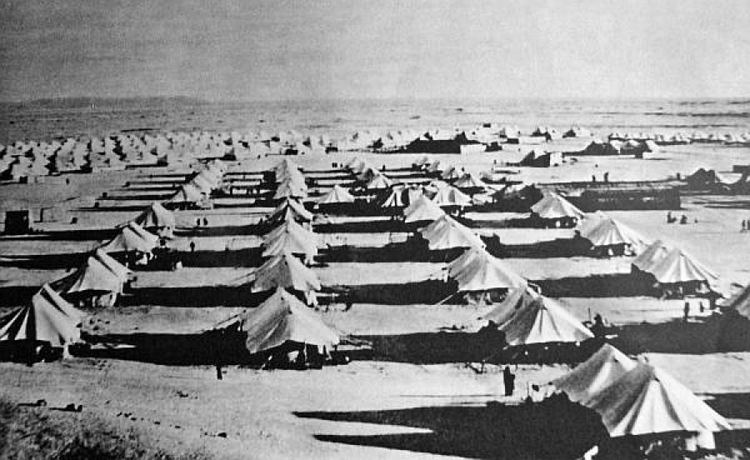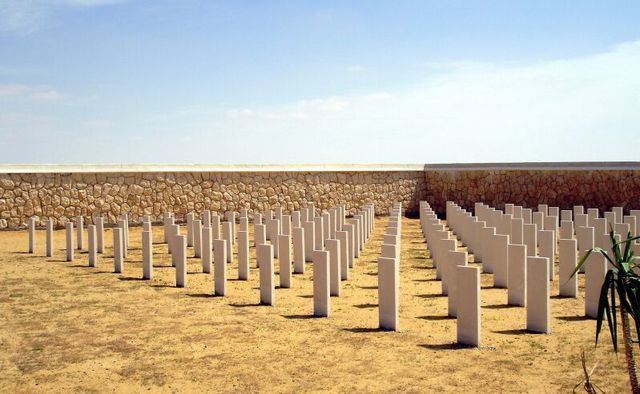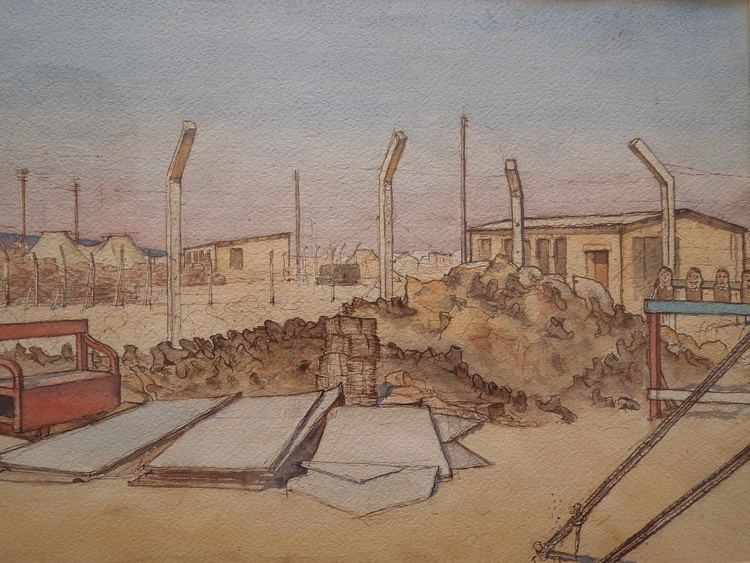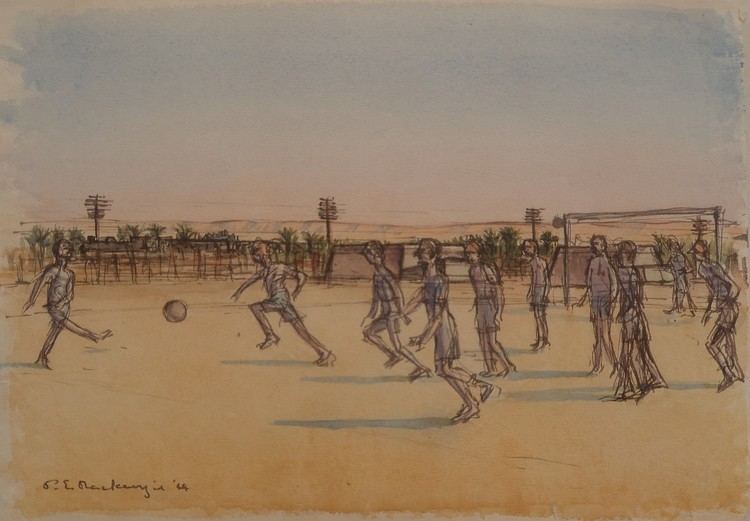 | ||
The El Shatt was a complex of World War II refugee camps in the desert of the Sinai peninsula, in Egypt. Residents lived there from the summer of 1944 to the beginning of 1946. The region of Dalmatia (in today's modern Croatia, then Yugoslavia) was evacuated by the Allies, ahead of a German invasion in 1944. The camp was disbanded in 1946 after the war ended.
Contents

El shatt
Background

Fleeing the German offensive in the beginning of 1944, a large number of civilians (over 30,000) in fear of reprisals, escaped to the island of Vis. Vis had been established as the Headquarters for the Partisan army. The allied British army was not able to accept so many people who were fleeing to Italy. It was decided that the non-combatant population of the island and evacuated refugees would be sent to southern Italy. Firstly they were sent to Bari, and then to Taranto. The refugees were mostly from Makarska (around 6000), Vodice, Hvar, Vis, Korčula, Ravni Kotari and Bukovica. There was heavy fighting in Italy between the Allied forces and the Germans. It was decided to transfer the refugees to Egypt, which was then under the British control.
The camp

The camp was located near the Suez Canal. It was divided into five smaller bases. Refugees were housed in tents (average one to two families per tent). Although far from home and living in poor conditions, they tried to preserve the illusion of normal life. They established schools, various workshops, a shared laundry,and issued a newspaper (Our Paper/Naš List). One tent was designated as a church. Josip Hatze, a famous Split-born composer and conductor, who was in his later years, spent his time organizing choirs. People from Dalmatia had difficulty adjusting to desert conditions, especially children who suffed from intestinal diseases. Many of them died. The British government also kept a strict regime, allowing exit from the complex only with passes. On several occasions, the area of El Shatt was bombed.

More than 30,000 people lived in the refugee camp for a total of 18 months. During their time in the camp, there were 300 marriages. Additionally 650 children were born.They returned home at the beginning of 1946 when the war was over and a more stable political situation in Yugoslavia was established. At the place of their exile rests a graveyard with 825 graves of people who did not withstand the tough conditions of life in the desert.
Legacy

John Corsellis, a British worker (who later became an author) at the camp wrote, "People mysteriously appeared and disappeared with a frequency reminiscent of a popular transit hotel". He also added, "I must not give the impression that these people created a little paradise here on the desert with their resourcefulness. Their extreme lack of everything only makes what they do more impressive, standing as it does against such a background." The refugees were mostly women and children.

The Refugee cemetery was seriously damaged in the Arab-Israeli War. Finally, in 2003 with the support of the Croatian government, a memorial site was established. An ethnographic collection of objects from the El Shatt are on display at the local Center for Culture in the town of Vela Luka.

